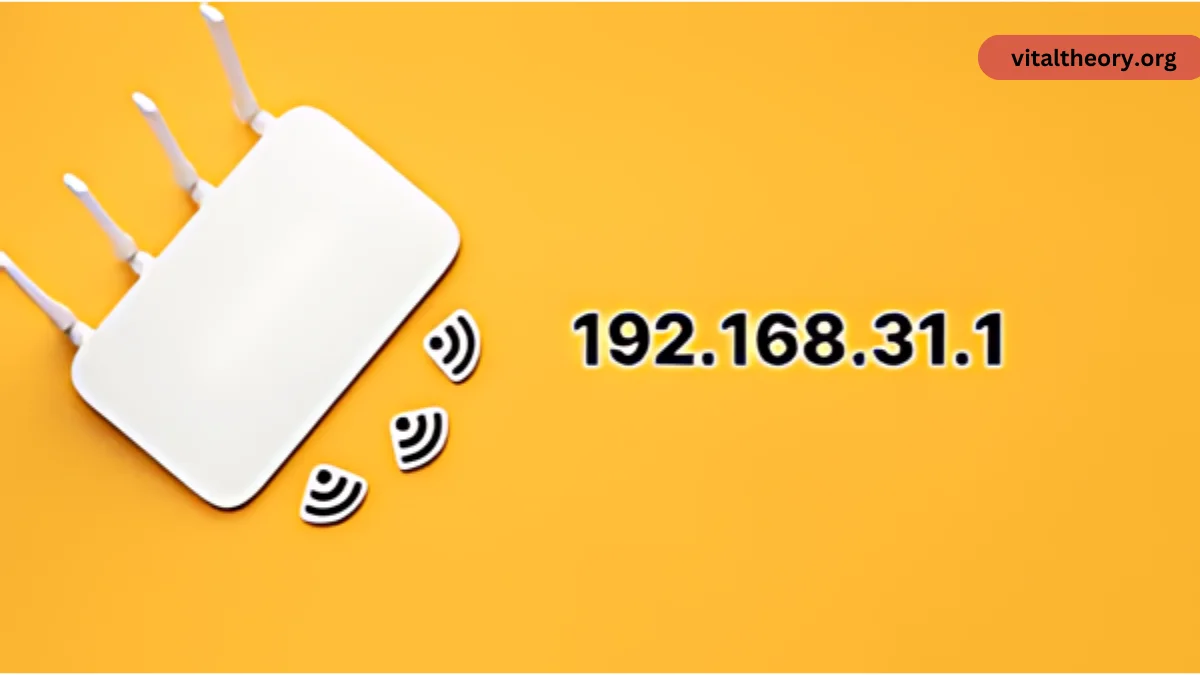Unlocking Your Network: A Deep Dive into 192.168.31.1 IP AddressAre you ready to take control of your home network? Whether you’re a tech enthusiast looking to tweak your router settings or a beginner trying to navigate the digital realm, understanding your router’s IP address is crucial for maintaining a secure and efficient online experience. In this blog post, we’ll unravel the mysteries behind the often-overlooked 192.168.31.1—an essential gateway for MIWIFI users!From seamless admin login procedures that empower you to customize network settings, enhance security protocols, and optimize performance to invaluable geolocation insights that help pinpoint device connections within your space.
What is 192.168.31.1 IP Address?
The IP address 192.168.31.1 is a private IPv4 address commonly used by MIWIFI routers. It’s part of the range reserved for local networks, enabling multiple devices to communicate within that environment.
This specific address serves as a gateway for users to access their router’s administrative settings. By typing it into a web browser, you can manage network configurations and connected devices.
Many home networks utilize this IP because it’s easy to remember and helps facilitate smooth connectivity among various gadgets like smartphones, tablets, and computers.
IP Address Details
| Parameter | Value |
|---|---|
| IP Address | 192.168.31.1 |
| Address Type | Private |
| Protocol Version | IPv4 |
| Network Class | Class C |
| Decimal (IPLong) | 3232235777 |
| Hex (Base 16) | c0a81f01 |
| Numeric | 192168031001 |
| Reverse DNS | 1.31.168.192.in-addr.arpa |
| CIDR Block | 192.168.31.0/24 |
| Network Range | 192.168.31.0 – 192.168.31.255 |
| Network ID | 192.168.31 |
| Broadcast Address | 192.168.31.255 |
Also Read: Apkgstore com | Hiking the Manaslu Circuit | Makeboth Com | atmmon.onlinesbi.com
How to access MIWIFI Router Admin Login using 192.168.31.1?
The MIWIFI router is a popular choice for home and business networks due to its reliable performance and user-friendly interface. However, in order to fully utilize the features of this device, it is necessary to access the MIWIFI router admin login page. This can be achieved by using the default IP address 192.168.31.1, which serves as the gateway for accessing advanced settings and configurations.
Default Username and Password
| Router Model | Username | Password |
|---|---|---|
| MiWiFi R3 | admin | admin |
| MiWiFi R4 | admin | admin |
| MiWiFi Pro | admin | admin |
Step by step Guide for Admin Login Process:
Step 1: Connect to your Network
To begin with, make sure your device is connected to your MIWIFI router network either through Wi-Fi or Ethernet cable. You cannot access the admin login page if you are not connected to your local network.
Step 2: Open a Web Browser
Open any web browser on your device such as Google Chrome, Mozilla Firefox, or Safari.
Step 3: Enter IP Address
In the address bar of your web browser, type in “http://192.168.31.1” and press Enter. Make sure there is no extra spacing or characters before or after the IP address as it may result in an error.
Step 4: Login Details
You will now be directed to the MIWIFI router admin login page where you need to enter your username and password to gain access. The default login details for most MIWIFI routers are “admin” for both username and password fields but it might differ depending on your model.
Step 5: Explore Advanced Settings
Once you have successfully logged into the MIWIFI router admin portal, you will have access to a plethora of advanced settings such as changing Wi-Fi passwords, creating guest networks, setting up parental controls, updating firmware and much more.
Understanding the geolocation aspect of IP addresses and how it works with 192.168.31.1
Geolocation refers to the process of identifying a device’s physical location through its IP address. Each IP address can provide clues about where it is registered or assigned.
However, the 192.168.31.1 IP address operates within a private network range. It’s typically used by MIWIFI routers for local access and does not correspond to an exact geolocation on public maps.
This means that while you can trace other public-facing IPs back to specific geographic locations, 192.168.31.1 will lead you only to your internal network setup.
Troubleshooting common issues with accessing MIWIFI Router Admin using 192.168.31.1
Troubleshooting
- Forgot Password: Reset the router to its factory settings by pressing the reset button for 10 seconds.
- Connection Issues: Ensure the device is connected to the correct network and restart the router.
- Login Failed: Verify the username and password are correct and try again.
Accessing the MIWIFI Router Admin using 192.168.31.1 can sometimes be tricky. One common issue is an incorrect IP address entered in the browser. Double-check that you’ve typed it exactly as intended.
Another frequent hurdle is network connectivity problems. Ensure your device is connected to the router’s Wi-Fi or via Ethernet cable before attempting to access the admin panel.
If you’re still facing issues, clear your browser cache or try a different web browser altogether. Sometimes, outdated settings can create barriers.
Firewall or security software might also interfere with access attempts, so temporarily disabling these programs could help identify if they’re causing trouble.
Lastly, ensure that your router’s firmware is up-to-date; outdated versions may limit functionality and accessibility of login interfaces.
Also Read: Proxyium | IncreaseUpCard.org | www.showpm.com’s Serial | Vegamovies In | Morning Coffee Tips With No Side Effect
Tips for securing your router’s login with 192.168.31.1 IP address
As cyber threats become increasingly sophisticated, it is essential to prioritize the security of your home network. One crucial step in safeguarding your network is by securing your router’s login with the 192.168.31.1 IP address.
1) Change Default Login Credentials: The default username and password for most routers using the 192.168.31.1 IP address are “admin” or “1234”. These are known and easily accessible, making them vulnerable to hacking attempts. As soon as you set up your router, change these default credentials to a strong and unique combination that includes letters, numbers, and special characters.
2) Regularly Update Firmware: Routers receive frequent firmware updates from their manufacturers to fix security vulnerabilities and improve performance. It is crucial to check for these updates regularly and install them immediately to keep your network secure.
3) Enable Two-Factor Authentication (2FA): Adding an extra layer of security through two-factor authentication can significantly reduce the risk of unauthorized access to your router’s login page.
4) Disable Remote Access: Most routers have a feature called Remote Administration, which allows users to access their routers’ settings remotely from any internet-connected device. This convenience comes at a cost as it increases the chances of hackers gaining access to your network remotely. We recommend disabling this feature unless necessary.
5) Use Network Segmentation: Segmenting or dividing your home network into smaller subnetworks helps contain potential threats within one area instead of spreading throughout the entire network if one device gets compromised.
6) Keep Your Router Away From Public Reach: If possible, place your router in a secure location where it is not easily accessible by outsiders or visible through windows or doors.
7) Use a Strong Wi-Fi Password: A weak Wi-Fi password can easily be cracked, giving unauthorized individuals access to your network. Make sure your wireless password is at least 12 characters long and includes a mix of uppercase and lowercase letters, numbers, and special characters.
8) Enable Guest Network: If you have guests frequently visiting your home, it is best to set up a separate guest network for them to use. This way, they will not have access to your main home network and its devices.
9) Monitor Connected Devices: Regularly check the list of devices connected to your network through your router’s admin page. If you see any unfamiliar or unwanted devices connected, immediately change your wireless password and investigate further.
10) Use a Firewall: A firewall acts as a barrier between your internal network and external threats by filtering incoming traffic. Most routers come with built-in firewalls that can be enabled for an extra layer of protection.
Alternative methods for accessing MIWIFI Router Admin if 192.168.31..1 doesn’t work
There may be times when you encounter difficulties accessing the MIWIFI router admin page using the default IP address 192.168.31.1. This could happen due to various reasons such as network issues, incorrect login credentials, or conflicts with other devices on your network.
1) Use a Different Browser: Sometimes, the issue with accessing the admin page may lie with your browser itself. In such cases, try using a different web browser like Google Chrome, Mozilla Firefox, or Microsoft Edge to see if it works.
2) Try using a Different Device: If you are unable to access the MIWIFI router admin from your computer, try using another device like your smartphone or tablet. This will help rule out any device-related issues that may be causing the problem.
3) Reset Router: If none of the above methods work, you can reset your router to its factory settings. Look for a small reset button at the back of your router and press it for around 10-15 seconds until all lights on the front start blinking. Once done, try accessing the admin page again using 192.168.31.1.
4) Check Network Settings: Ensure that your device is connected to the correct Wi-Fi network and has a stable internet connection before attempting to access the MIWIFI router admin page.
5) Troubleshoot Network Issues: If there are any network issues affecting your device’s connectivity with the router, then troubleshooting those first might help resolve the problem.
6) Consult User Manual: If none of these methods work for you or if you’re not comfortable making changes yourself, refer to the user manual provided by MIWIFI for further guidance on how to access their router admin panel through alternative means.
Also Read: Ads.xemphimon@gmail.com: Email Marketing | www.milifestylemarketing.com Login
Conclusion:
Understanding your router’s IP address, such as 192.168.31.1, is essential for managing your home network effectively. It serves as the gateway to access various settings that can optimize performance and security.
When you know how to navigate to this IP address, you gain control over features like Wi-Fi passwords and parental controls. This knowledge empowers users to troubleshoot issues quickly or make necessary changes when needed.
Moreover, understanding geolocation aspects of an IP address can enhance your awareness of online privacy challenges in today’s digital world. Taking steps to secure access via 192.168.31.1 ensures a safer internet experience.
Whether you’re configuring new devices or simply checking network status, familiarity with your router’s interface will always be beneficial for maintaining a stable connection at home or in the office.




